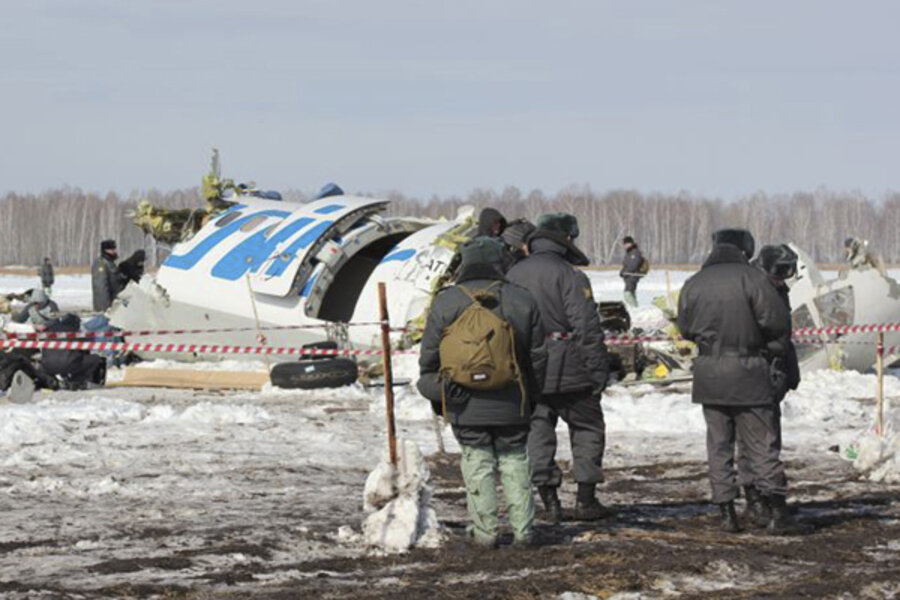Plane crash kills 31 in Siberia
Loading...
| Moscow
A passenger plane crashed in Siberia shortly after taking off Monday morning, killing 31 of the 43 people on board, Russian emergency officials said. The 12 survivors were hospitalized in serious condition.
The ATR-72, a French-Italian-made twin-engine turboprop, operated by UTair was flying from Tyumen to the oil town of Surgut with 39 passengers and four crew.
The aircraft went down on a snowy field outside Tyumen, a regional center in Siberia about 1,700 kilometers (1,000 miles) east of Moscow. The cause of the crash was not immediately clear.
UTair published a list of the passengers and crew, and none of them appeared to be foreigners.
The Emergency Situations Ministry gave the figures for the dead and for survivors.
Russia has seen a string of deadly crashes in recent years. Some have been blamed on the use of aging Soviet-era aircraft, but industry experts point to a number of other problems, including poor crew training, crumbling airports, lax government controls and widespread neglect of safety in the pursuit of profits.
Pilot error was blamed for a September crash in Yaroslavl, a Russian city 250 kilometers (150 miles) northeast of Moscow, that killed 44 people, including a professional hockey team.
Pilot error and fog also were ruled the main causes of a crash in April 2010 that killed Poland's president and 95 other people as their plane was trying to land near Smolensk, in western Russia.
The ATR-72 has been involved in several accidents in past years.
Most recently, one went down in bad weather in Cuba in November 2010, killing all 68 people on board. Cuban aviation officials said the investigation showed there was nothing wrong with the aircraft.
In August 2009, an ATR-72 flown by Bangkok Airways skidded off the runway and crashed into a building after landing in stormy weather on the Thai resort island of Samui, killing the pilot and injuring seven people.







